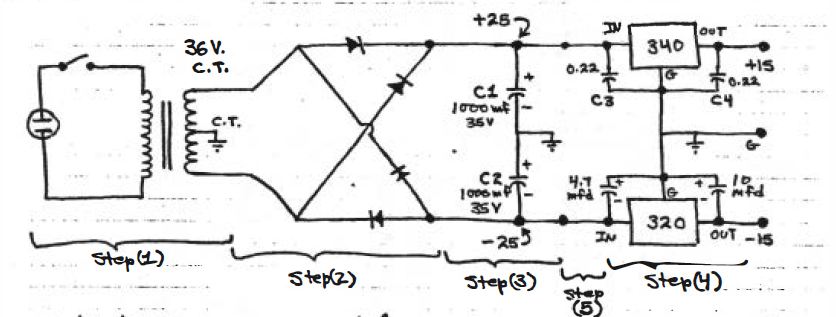I have built the circuit in the diagram below with a couple of minor changes. I desire 3 DC outputs - +12, -12, and +5 volts. So, the changes I made is to use an MC7812BTG for the +12 and an MC7912BTG for the -12. Then I simply added an LM7805CT after the 7812 to get my +5. I made 2 heatsinks from a couple of L brackets I had laying around. I also added LEDs to the 3 "rails" so that I could verify they are operating. Everything else is the same as the diagram.
This is for a very small modular synthesizer case. I tested the power supply with no load and it checked out fine. Then I installed 4 modules with approximately 350 mA draw on +12 and 100 mA on -12. The +5 volt rail was not used at all. I powered the case on and it all worked as expected for about 35 or 40 minutes. Then the modules glitched and the audio "froze". These are digital modules. Anyway, turning the power switch off and back on restored the function of the synth, but just a couple minutes later it glitched again. That's when I realized how hot the case was underneath where the voltage regulators are at.
My main questions are:
- Am I pushing the regulators too hard by supplying 25 volts and dropping it to 12? Should I consider a 24V transformer?
- What would a "proper" heat sink consist of for these regulators? Is my "L" bracket piece of metal (3/4" wide, 1/8" thick, and 4" long, bent to L shape at center) just not enough of a heatsink?
- If the 7812 is overheating, what is occurring to make the modules "glitch"? (overvoltage, undervoltage, etc.)?
Thanks in advance for any advice, comments, or stern reprimands.

